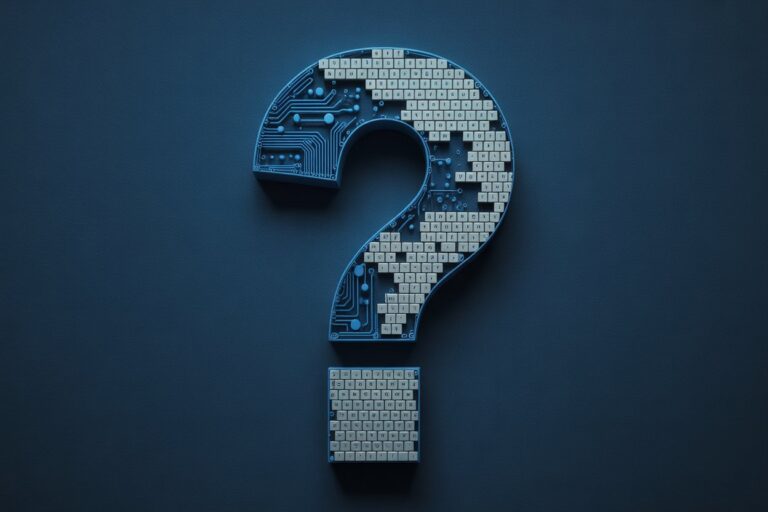AI Enters the Courtroom as Judges Navigate Ethics and Independence
U.S. courts are testing AI for research and drafting while wrestling with ethics, disclosure, and legitimacy. Lessons from the U.K., EU, India, and China show how guardrails can shape adoption without compromising justice.
As courts experiment with artificial intelligence to draft opinions, analyze filings, and manage case flow, a pressing question emerges: can machines assist the bench without jeopardizing judicial independence, fairness, or trust?
Judges occupy one of the most sensitive roles in democratic systems: interpreting law, resolving disputes, and preserving public confidence in justice. The introduction of AI into this process, from drafting research memos to suggesting sentencing ranges, has triggered an ethical and procedural reckoning. In the United States, some judges have cautiously explored AI assistance, while others have issued standing orders limiting its use.
Globally, courts in England and Wales, the European Union, India, and China are taking different paths. Some endorse limited use with rigorous human review. Others restrict AI from judicial reasoning entirely. These approaches offer a preview of how guardrails can preserve legitimacy while allowing technology to assist the bench.
The integration of AI into judicial chambers is no longer hypothetical. Pilot projects, standing orders, and draft policies are already shaping how courts approach automation, from research assistance to administrative support. Even the Administrative Office of the U.S. Courts has begun reviewing how AI may affect filings, confidentiality, and court management in the years ahead.
How AI Is Entering Judicial Work
AI is appearing first as an assistive tool rather than as a decision-maker. U.S. courts are testing language models to summarize briefs, draft short procedural orders, and surface potentially relevant authorities. The Federal Judicial Center’s primer on AI for judges frames these systems as advisory and emphasizes human verification and accountability.
Policy is beginning to catch up. The New York Unified Court System adopted rules on AI use by judges and staff in October 2025 that restrict uploading confidential materials to external services and require training on approved tools. The policy emphasizes that AI must never replace human judgment and mandates that all AI-generated content be verified for accuracy and bias. Similar committees and working groups have studied or proposed guidance in states such as California, Delaware, Illinois, and Arizona.
Outside the United States, the Judiciary of England and Wales has issued cautious guidance encouraging limited use with strict human review. The December 2023 guidance, refreshed in April 2025, permits AI for administrative tasks like summarizing text and composing emails but explicitly warns against using AI for legal research and legal analysis due to accuracy concerns. India’s Kerala High Court in July 2025 directed that AI tools should not be used for judicial reasoning, findings, or drafting judgments by trial courts. China’s Hangzhou Internet Court has deployed AI-driven assistance for online evidence review and mediation in internet disputes. These examples show a trend toward bounded assistance rather than automation of adjudication.
Ethical and Legal Tensions
Judicial ethics rules predate algorithmic advisory systems. The National Center for State Courts highlights risks around ex parte information, confidentiality, explainability, and impartiality. If an AI tool relies on material outside the record, the consultation may raise due process concerns. Courts must ensure any AI-assisted analysis remains grounded in admissible evidence and the parties’ submissions.
Public trust is a second constraint. A 2024 experimental study on perceptions of AI in judicial decision-making found that people often view AI-assisted rulings as less legitimate, even when outcomes are the same as human-only decisions. Transparent disclosure, coupled with clear statements that a judge retains final authority, can mitigate the risk that litigants will see AI as supplanting human judgment.
Explainability and contestability present additional challenges. If an AI system influences a judicial outcome, parties need a meaningful opportunity to challenge the reasoning. Proprietary models and trade secrets complicate that requirement. The safer operational pattern is to confine AI to non-dispositive tasks, to keep logs of any AI suggestions that informed drafting, and to preserve a clear human-authored rationale in the final order.
The Specter of Algorithmic Bias
One of the most serious concerns surrounding AI in courts is the potential for algorithmic bias to perpetuate or amplify existing inequalities in the justice system. AI systems trained on historical judicial data risk encoding the biases embedded in those decisions. Studies of risk assessment tools like COMPAS, used in criminal sentencing decisions, have revealed troubling patterns of racial disparity. A landmark ProPublica investigation found that these algorithms were nearly twice as likely to incorrectly flag Black defendants as future criminals compared to white defendants.
The problem extends beyond criminal justice. Research shows that AI trained on past judicial decisions may learn and replicate patterns of discrimination based on race, gender, socioeconomic status, or geographic location. Even when demographic information is explicitly removed from training data, AI can identify proxy variables that correlate with protected characteristics, effectively reintroducing bias through the back door.
Courts considering AI adoption must implement rigorous fairness testing, ensure diverse training datasets, and establish ongoing auditing mechanisms. Without these safeguards, AI risks becoming a high-tech means of perpetuating discrimination while lending it a veneer of objectivity and mathematical precision.
Access to Justice and the Two-Tier Risk
AI’s deployment in courts raises critical equity concerns that could reshape access to justice. Legal scholars have warned that AI may create a two-tiered system where well-resourced parties benefit from sophisticated AI tools while indigent litigants and public defenders are left behind or relegated to inferior automated assistance.
Large law firms and corporate litigants can afford premium AI research tools, advanced document analysis systems, and teams of technical experts to maximize AI’s benefits. Meanwhile, legal aid organizations, small firms, and pro se litigants may lack the resources, expertise, and relationships needed to access or effectively deploy AI tools.
This disparity threatens to widen the justice gap rather than close it. If AI becomes standard in legal practice, those unable to afford it may face a structural disadvantage in court. Alternatively, if low-income individuals are channeled toward AI-driven legal assistance while affluent parties receive human lawyers, it could normalize a lower tier of justice quality.
Policymakers must ensure that AI deployment in courts includes provisions for equitable access. This might include public funding for AI tools in legal aid organizations, free access to court-approved AI systems for self-represented litigants, and training programs to help under-resourced practitioners use AI effectively.
Judicial Pushback and Guardrails
Judges have already drawn lines in filings practice. Following high-profile instances of fabricated citations, including the landmark Mata v. Avianca case where attorneys submitted AI-generated fake legal precedents, dozens of federal judges issued standing orders requiring attorneys to verify and, in some courts, to disclose AI use in briefs. In that case, Judge Kevin Castel sanctioned the attorneys $5,000 and required them to notify both their client and the judges falsely identified as authors of nonexistent opinions. Some judges now require certifications that any AI-generated content has been reviewed by a human and cross-checked against primary authority.
Institutional bodies are proposing broader governance. The National Courts and Justice Institute recommends human final authority over decisions, limiting AI to assistive roles, and maintaining audit trails for any machine-generated text. Internationally, the EU AI Act classifies judicial tools as high risk and requires risk management, traceability, and human oversight. UNESCO’s AI and the Rule of Law initiative emphasizes similar principles of transparency and accountability.
Vendors have responded with confidentiality commitments and court-specific offerings. Legal AI providers such as Harvey and CoCounsel publicly state that customer data is not used to train foundation models without consent. Courts that procure these tools should formalize that expectation in contracts, require third-party security attestations, and ban retention of judicial work product by external services.
Operational Guidance for U.S. Courts
Use-case limits. Confine AI to non-dispositive assistance such as summarization, cite checking, transcript analysis, and template generation. Keep merits analysis, fact finding, and substantive legal reasoning as human-only functions. Drawing on international examples, establish clear boundaries between administrative support and judicial decision-making.
Disclosure and recordkeeping. Disclose AI assistance when it materially contributed to an order or opinion. Maintain internal logs and versioned drafts that show human review and rationale. Following the Kerala High Court model, maintain detailed audit trails of all AI tool usage.
Data governance. Prohibit uploading sealed or confidential materials to public models. Require on-premise or approved private endpoints. Ensure no training on judicial data without written consent and explicit contractual safeguards. As emphasized in New York’s policy, protecting privileged communications and personal identifiers is paramount.
Verification workflows. Mandate human cite checks, verification against the record, and comparison to controlling authority. Treat AI outputs as untrusted drafts until verified. The Mata v. Avianca case demonstrates the severe consequences of failing to verify AI-generated legal citations.
Bias testing and fairness audits. Require regular algorithmic audits to detect and mitigate bias. Establish diverse oversight committees that include community representatives. Test AI systems across different demographic groups before deployment. Monitor outcomes for disparate impact and adjust accordingly.
Equitable access provisions. Ensure AI tools are available to public defenders, legal aid organizations, and self-represented litigants on par with well-resourced parties. Provide training and support to prevent AI from widening the justice gap. Consider public funding mechanisms to democratize access to legal AI tools.
Training and capacity. Provide bench-focused education using resources like the FJC primer and NCSC guidance. Establish a court technology committee to evaluate tools, update policies, and conduct periodic audits. Following England and Wales’ approach, ensure judges understand both AI’s potential benefits and its significant limitations.
Distinction between court levels and case types. Recognize that AI use in appellate courts raises different concerns than in trial courts, where credibility assessments and live testimony are central. Similarly, criminal cases involving liberty interests demand heightened scrutiny compared to low-stakes civil matters. Tailor AI policies to reflect these distinctions.
International Context and Lessons
England and Wales encourage limited AI use with human control, and they caution against unverified citations or opaque reasoning. Their December 2023 guidance recognizes AI’s potential while warning specifically against generative AI for legal research due to accuracy concerns. The judiciary has also begun piloting Microsoft 365 Copilot for administrative tasks while maintaining strict boundaries around judicial reasoning.
The EU has moved to a horizontal regulatory model that treats judicial AI as high risk, which requires documentation, oversight, and recourse mechanisms. The AI Act, which came into force in August 2024, mandates transparency, human oversight, and accountability for high-risk AI systems, including those used in judicial contexts.
India has taken a measured approach that restricts AI from judicial reasoning in some courts. Kerala’s July 2025 policy represents a pioneering effort to comprehensively govern AI use in the judiciary, prohibiting tools like ChatGPT and requiring human supervision at all times. The policy mandates training programs and explicitly warns against AI’s potential for privacy violations and erosion of trust.
China’s specialized internet courts show how administrative and low-stakes matters can be streamlined with AI-driven assistance without displacing judicial authority. These courts handle online disputes with AI support for evidence review and mediation, though human judges maintain final decision-making authority.
For U.S. courts, these regimes offer practical templates. The common thread is simple: machines can help with clerical and research burdens, but only judges can decide cases. The safest path is incremental adoption, formal verification, clear disclosure to parties when AI assistance meaningfully informs drafting, and continuous evaluation for bias and fairness.
Balancing Efficiency and Justice
The integration of AI into judicial systems presents both tremendous opportunities and significant risks. AI can help address crushing case backlogs, provide multilingual access to justice, and assist overburdened judges and legal aid lawyers. Yet without proper safeguards, it threatens to automate discrimination, create two-tiered justice, and erode public trust in courts.
The path forward requires vigilance and humility. Courts should proceed incrementally, with robust testing and evaluation at each stage. Transparency about AI use, rigorous verification of AI outputs, and unwavering commitment to human judgment must remain paramount. Most importantly, the question should always be: does this technology serve justice for all, or only for those with the resources to harness it?
As jurisdictions worldwide grapple with these challenges, the Kerala High Court’s founding principle offers essential guidance: AI tools must never be used as a substitute for decision-making or legal reasoning. Technology can and should support judicial efficiency, but the human element of justice — judgment, discretion, empathy, and accountability — must remain inviolate.
My Take
AI is already stepping into the courtroom. The question is no longer whether it belongs there, but how courts can use it without compromising fairness or trust. When applied thoughtfully, AI could help judges manage caseloads, organize records, and improve access to justice. But if these systems are only available to well-funded jurisdictions or private vendors, we risk building a justice system divided by technology. True modernization means ensuring that every court, regardless of budget, has equal access to reliable, transparent AI tools.
The larger danger lies in bias within the very systems judges may come to rely on. Algorithms trained on historical rulings can quietly absorb and reproduce the prejudices embedded in past decisions. If courts adopt AI without rigorous auditing and public oversight, they risk hardwiring those distortions into the next generation of judgments. Judicial AI must therefore be open to scrutiny, explainable in reasoning, and accountable in every output. The moment a judge relies on an opaque system to reach a conclusion, the integrity of justice itself is at stake.
Sources
European Commission (AI Act) | Federal Judicial Center | Justia (Mata v. Avianca) | National Courts and Justice Institute | National Center for State Courts | National Library of Medicine (Perceptions Study) | Reuters (NY Courts Policy) | Judiciary of England and Wales | Times of India (Kerala Policy) | Wikipedia: Hangzhou Internet Court | ProPublica (Machine Bias) | Yale Journal of Law and Technology (Access to Justice)
Disclosure: This article was prepared for educational and informational purposes only. It does not constitute legal advice and should not be relied upon as such. All cases, sanctions, and sources cited are publicly available through court filings and reputable media outlets. Readers should consult professional counsel for specific legal or compliance questions related to AI use.





